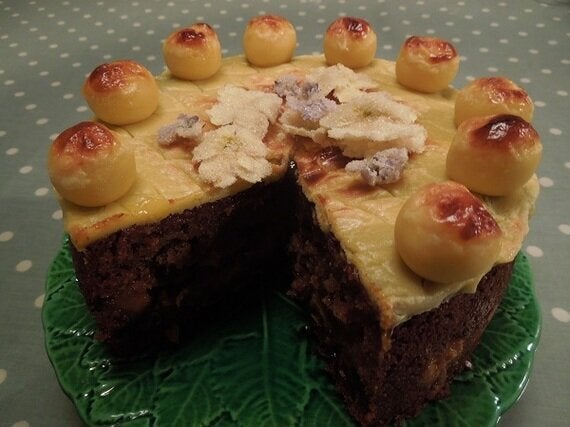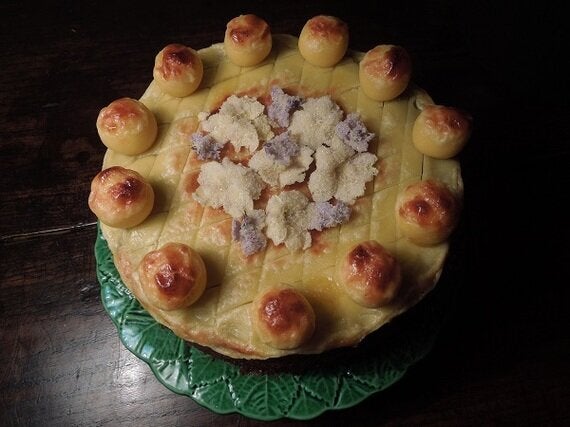
Simnel cakes have been around since the Middle Ages and records show that back as far as the 18th century servant girls would be allowed to raid their employers' larder supplies to make one to take home for Mothering Sunday. They're also known these days as Easter cakes.
A fruit cake sandwiched and topped with marzipan, the Simnel cake, it's said, used to be decorated with fresh or crystallised flowers.
Then the Victorians introduced a new tradition of putting 11 (or 12) little marzipan balls around the edge of the cake, to symbolise the Apostles (plus or minus Judas).
As a firm believer in overkill, I've done both. This recipe, used here with permission, comes almost in its entirety from the sainted Mary Berry's Ultimate Cake Book. Buy this and Pam Corbin's Cakes and you will never need another cake cookbook again. Probably.
Simnel Cake
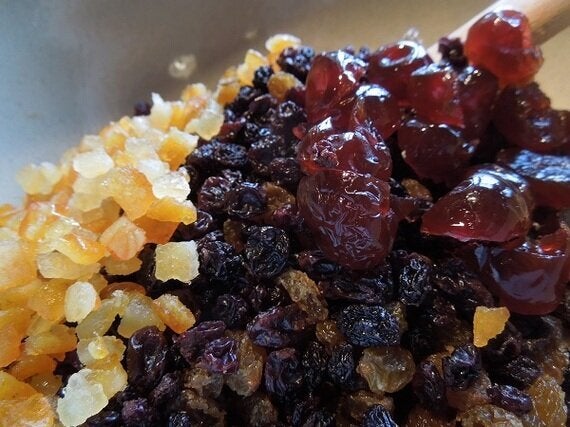
Ingredients:
225g butter or soft margarine
225g light muscovado sugar
225g self-raising flour
225g sultanas
100g currants
100g glace cherries, washed, dried and halved
50g mixed candied peel, chopped
Grated rind of two lemons
2 tspn mixed spice
For the filling and topping:
500g almond paste (I used bought)
2 tbsp apricot or plum jam
1 beaten egg to glaze
Method:

Preheat the oven to 300F/150C/Gas Mark 2.
Grease and line the base and sides of a round, deep, 20cm cake tin with greased greaseproof paper or use a proprietary cake release product. (I only had an 18cm tin deep enough so I used that and cooked the cake for a little longer).
In a big bowl, cream the butter and sugar until pale and fluffy.
Beat in the eggs a little at a time then gradually sift in the flour and mixed spice, mixing as you go.
Add the dried fruit, peel and lemon zest and give it all a good stir to distribute the fruit evenly.
Put half of the mix into the cake tin and level the surface.
Roll out one third of the marzipan into a circle the same size as the tin (easiest done between two sheets of greaseproof paper or baking parchment) and place it on top of the mix.
Spoon the remaining cake mix on top and level the surface.
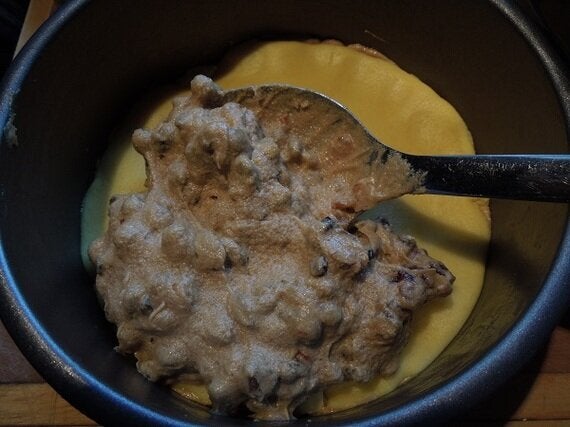
Bake for around 2 1/2 hours or until the cake is well-risen, has browned evenly and is firm to the touch. If after 1 hour's baking the top is getting too brown, cover it with foil.
Allow the cake to cool in the tin for around 10 minutes before turning it out onto a wire rack.
Once it's cool, warm the jam and brush it over the top of the cake. Roll half of the remaining marzipan into a circle to fit the top of the cake, then roll the rest into 11 equal balls between the palms of your hands.
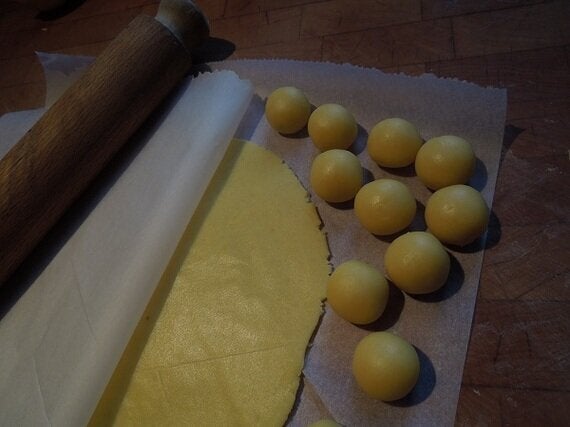
Press the circle of marzipan firmly on top of the cake and crimp the edges to decorate.
Mark a criss-cross pattern on the marzipan with a sharp knife and brush with beaten egg. Place the balls evenly around the top edge and brush them with egg too, then pop the cake under a hot grill until the marzipan is turning golden brown.
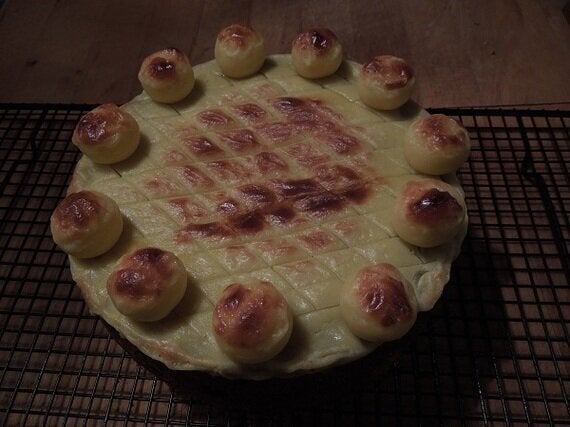
Decorate the centre with crystallised flowers - I'll be giving a recipe for those at Mrs Portly's Kitchen at the beginning of next week.
Have a happy Mother's Day.
